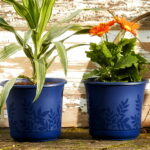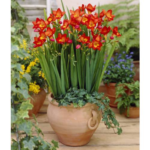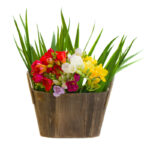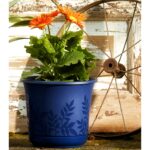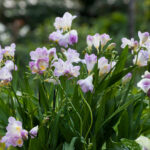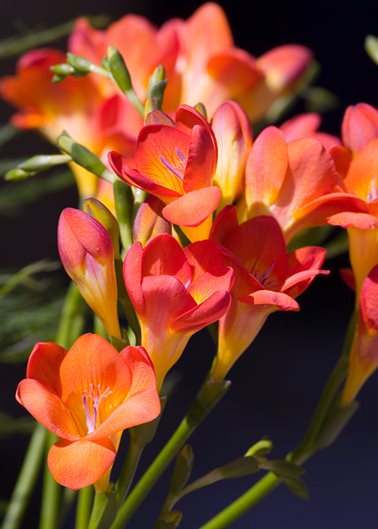Plant freesia tubers straight into the ground in April or May after the risk of frost has almost passed. If planting the previous autumn (undercover) or growing them in pots for the greenhouse, plant 5 tubers in a pot around 11 cm (4 inches). Plant them with pointed ends about 2½-5cm (1-2in) deep.

Water newly planted tubers regularly and keep them moist and shaded – a cool greenhouse or conservatory is ideal if they are in pots. When tubers begin to sprout, move pots to full sunlight and continue watering.
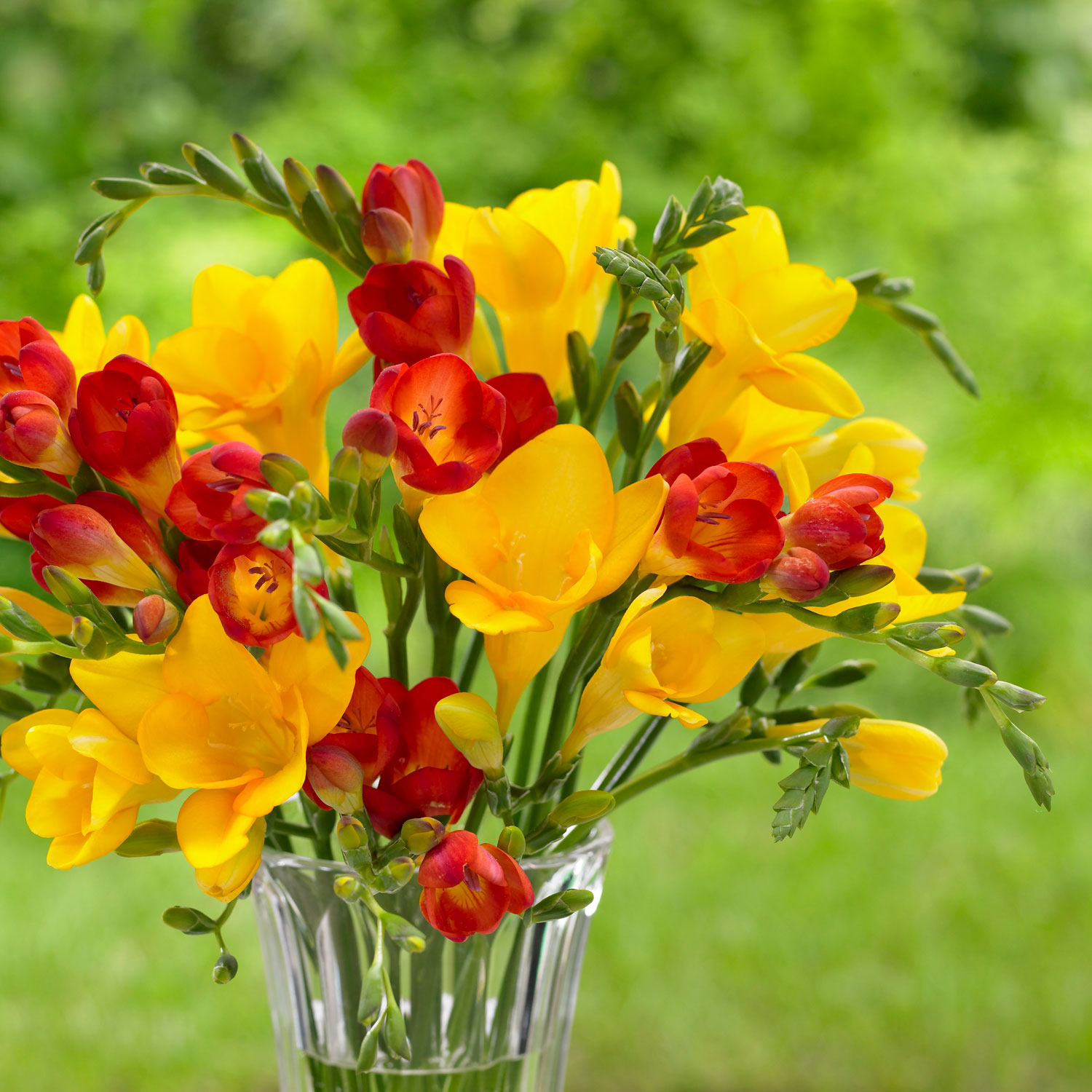
If you have planted freesia in September to November, leave the pots outside while temperatures are still between 10-17°C (50-62ºF) and then move indoors in winter to avoid cold weather and frost.
Always support the freesia, either with a triangle of canes to keep the foliage and flowering stems upright as they grow, or by using pea sticks. If the soil is lean or thin, apply a small dose of liquid seaweed feed when the plants are 5cm (2in) tall.
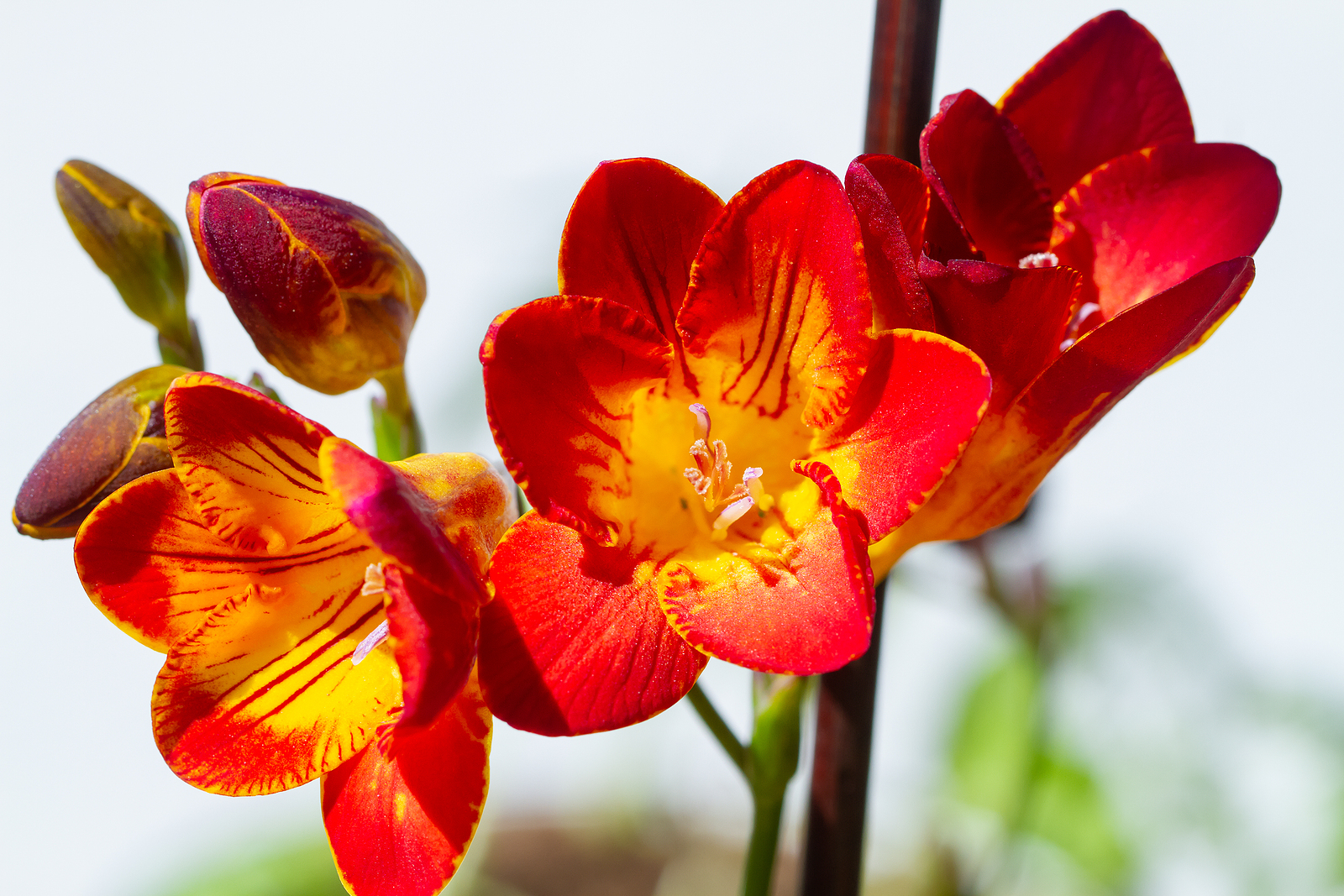
how to care for freesiawateringWater when you plant and then water regularly as the freesias grow, especially potted freesias.
fertilizationIf planted in good quality soil, they do not need to be fed. If the soil is lean or thin, they will benefit from a potassium-rich, liquid feed – comfrey juice or liquid seaweed fertilizer work well. Feed them only when the plants are up and growing and about 5cm (2in) tall.
stakingBoth in the garden and in pots, freesias will need really good support to keep the foliage and flowering stems upright as they grow. In pots you can use round supports, held on a central stick, but a triangle or square of sticks would do the job just as well. In the garden, use gnarled end branches of silver birch or hazel.
deadheadingCut off faded flowers at the base of the stem, but leave the foliage until it has died back completely. This allows the bulb to store more food and produce flowers next year.

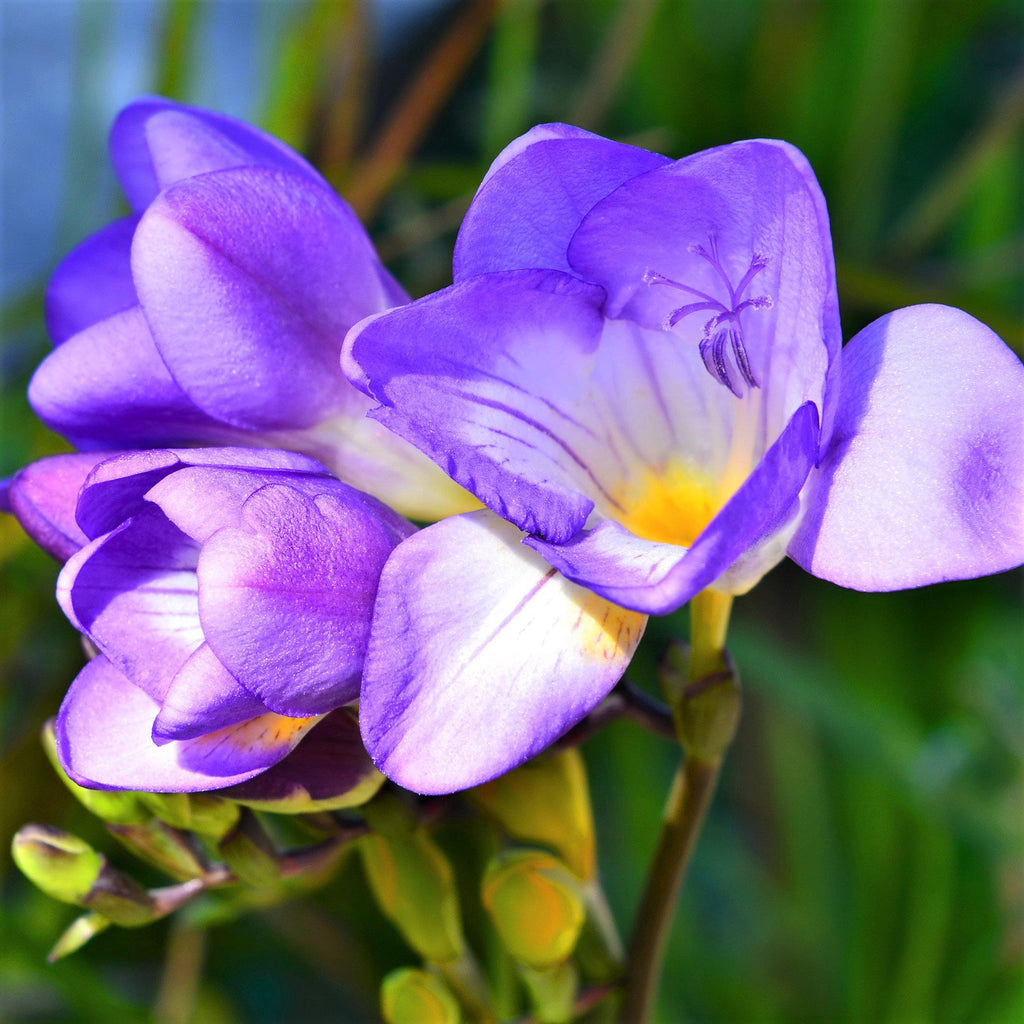
winterFreesia are not completely hardy and do not survive frost. In warmer parts of the UK you can cover deeply and overwinter them in the ground.
If you are in a colder area, lift the plants in the fall, either when the leaves turn yellow, or after the first frost. Cut the stems back to 2½ cm (1 inch) and allow the tubers to dry.
Once dry, remove the old, shriveled part, leaving only the new plump tubers. These can easily be stored in a tray with sand. Store them in a cool, dry and frost-free place. Plant again when the soil starts to warm in late April. Roll plantings to extend the blooming season.
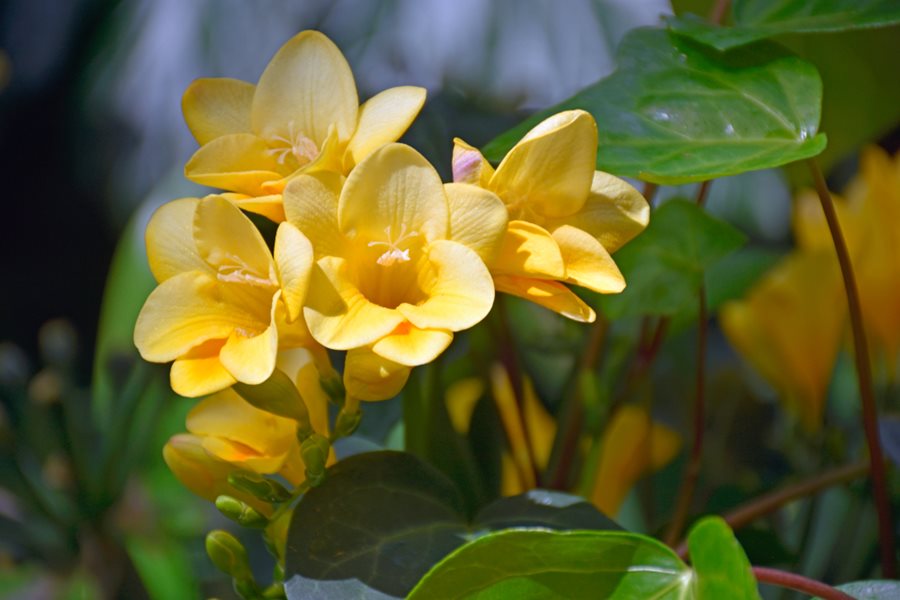
ourPlant freesia tubers under cover in March and April.Plant directly outside in April and May when the risk of frost is almost over.Water newly planted tubers.summerDeadhead faded freesia flowers.Cut flowers and freesia in bud for indoor vases.
autumnLift freesia tubers that will be stored over the winter.Mulch heavily over any tubers left in the ground over the winter.Fresh tubers can be planted in September to November under cover for spring flowers.winterAny freesia tubers planted in pots in autumn should be taken under cover to avoid cold weather and frost. A cold conservatory or greenhouse is ideal.why aren’t my freesias blooming?The brown foliage on your freesias should be kept in place until each leaf has died down. This gives the tubers a chance to store energy and provide a good display of flowers the following year. If that foliage was removed too soon, it will affect the flowering. It’s also possible that frost damaged the bulbs, or that the tubers had sat too long in their bag before planting – you might get an odd leaf, but no flower.


why aren’t my freesia bulbs growing?There is a chance that mice or voles have made off with them. It could be the frost that has damaged them, or waterlogged soil has led to onion rot.
why are my freesia wilting?Overwatering can cause freesia to wilt because they don’t like to sit wet. They can also wilt when too dry, so water well during dry spells.
It is also possible that the freesias are suffering from fusarium disease, which is a fungal disease. Fusarium wilt causes discoloration of stems and foliage, as well as stunted growth and yellowing and wilting leaves. If you suspect this is the problem, lift the plant from the roots and discard it. The soil can also be affected, so you can either replace it with fresh soil, or avoid planting in that area for a few years.
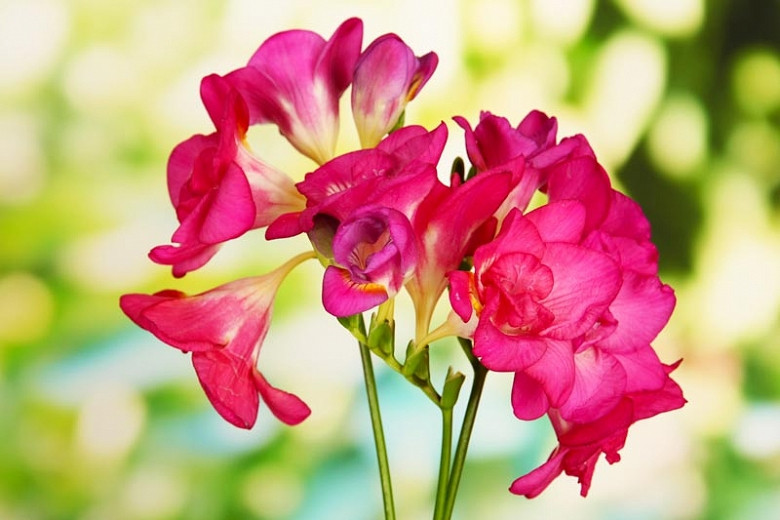
why does my freesia have spots?This could be a type of bacterial soft rot – it will appear on the leaves as small spots, which then turn gray or brown. Make sure that the soil is not too moist and that the plant is not sitting in damp, and also make sure that there is good air circulation around the freesia. However, if the plant is heavily infected, it is best to lift and destroy it.





